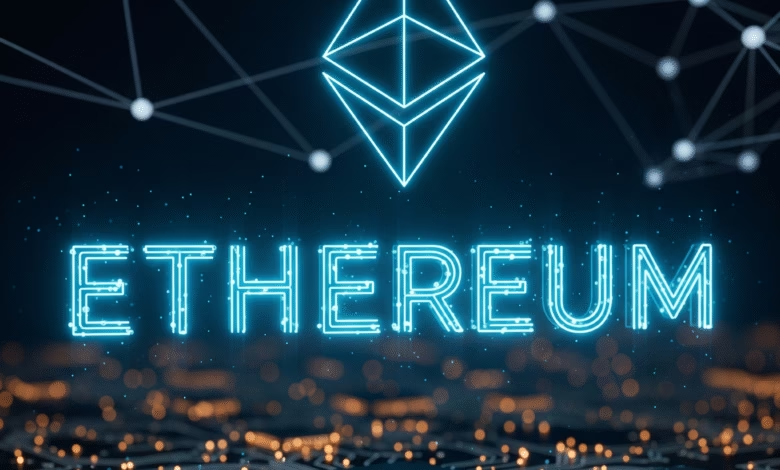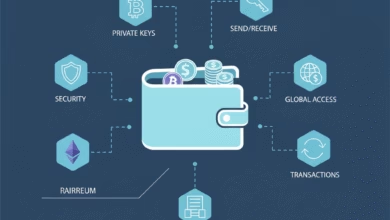Step by step guide on how to invest in the digital currency Ethereum
Everything you need to know before making your first ETH investment

In the ever-evolving landscape of digital finance, one name consistently stands out: Ethereum. More than just a cryptocurrency, Ethereum is a revolutionary technology that is reshaping industries and creating new opportunities for investors. For those new to the world of digital assets, taking the first step can seem daunting. This comprehensive guide is designed to demystify the process, providing a step-by-step walkthrough on how to invest in Ethereum, tailored for the North American audience. From understanding the fundamentals to advanced strategies and securing your investment, this article will equip you with the knowledge to navigate the exciting world of Ethereum.
Understanding Ethereum: More Than Just Digital Money

Before diving into the investment process, it’s crucial to grasp what makes Ethereum unique. Unlike Bitcoin, which was designed primarily as a digital currency and store of value, Ethereum is a decentralized, open-source blockchain with smart contract functionality. Think of it as a global computer that anyone can use to build and run decentralized applications (dApps). The native cryptocurrency of the Ethereum network is Ether (ETH), which is used to power these applications and facilitate transactions. For investors, the value of ETH is intrinsically linked to the growth and adoption of the Ethereum network and its vast ecosystem of dApps, which includes decentralized finance (DeFi), non-fungible tokens (NFTs), and more.
Is Now a Good Time to Invest in Ethereum?
The cryptocurrency market is known for its volatility, and the price of Ethereum can fluctuate significantly. However, several factors suggest a promising long-term outlook for the network. The transition to a Proof-of-Stake (PoS) consensus mechanism, previously known as Ethereum 2.0, has made the network more energy-efficient, scalable, and secure. This upgrade, coupled with a growing number of developers building on the platform, continues to drive demand for ETH. While past performance is not indicative of future results, the ongoing innovation and expanding use cases of Ethereum make it a compelling asset for those with a long-term investment horizon. As with any investment, it’s essential to conduct thorough research and consider your risk tolerance.
Step-by-Step Guide: How to Buy Ethereum in North America

Investing in Ethereum is more accessible than ever. Here’s a breakdown of the process for residents of the United States and Canada:
Step 1: Choose a Reputable Cryptocurrency Exchange
Your first step is to select a platform to purchase ETH. For North American investors, several user-friendly and secure options are available:
- Coinbase: Widely regarded as one of the most beginner-friendly exchanges, Coinbase offers a simple interface and a straightforward buying process. It is a publicly-traded company in the U.S., adding a layer of regulatory oversight.
- Gemini: Known for its strong security measures and compliance with New York State Department of Financial Services (NYSDFS) regulations, Gemini is another excellent choice for those prioritizing safety.
- Kraken: Offering a wide range of cryptocurrencies and more advanced trading features, Kraken is a solid option for both beginners and experienced traders. It is known for its competitive fees.
- Shakepay (Canada): A popular choice for Canadian investors, Shakepay allows for easy funding with Interac e-Transfer and offers a simple way to buy and sell Bitcoin and Ethereum.
- Wealthsimple Crypto (Canada): For Canadians who prefer to keep their investments in one place, Wealthsimple offers cryptocurrency trading alongside traditional stocks and ETFs.
When selecting an exchange, consider factors such as fees, security features (like two-factor authentication), ease of use, and the variety of supported cryptocurrencies.
Step 2: Create and Verify Your Account
Once you’ve chosen an exchange, you’ll need to create an account. This process typically involves providing personal information, such as your full name, address, date of birth, and a government-issued ID (like a driver’s license or passport). This is part of the Know Your Customer (KYC) and Anti-Money Laundering (AML) regulations that reputable exchanges must follow.
Step 3: Fund Your Account
After your account is verified, you’ll need to deposit funds. Common funding methods for North American users include:
- Bank Transfer (ACH in the U.S., EFT in Canada): A common and usually low-cost method.
- Wire Transfer: Often used for larger deposits.
- Debit Card: A fast and convenient option, though it may come with slightly higher fees.
- Interac e-Transfer (Canada): A popular and efficient way for Canadians to fund their accounts.
Step 4: Purchase Ethereum (ETH)
With a funded account, you can now buy Ethereum. On most exchanges, this is a simple process:
- Navigate to the trading or “buy/sell” section of the platform.
- Select Ethereum (ETH) from the list of available cryptocurrencies.
- Enter the amount you wish to purchase, either in your local currency (USD or CAD) or in ETH.
- Review the transaction details, including fees.
- Confirm your purchase.
The ETH you’ve purchased will then be available in your exchange wallet.
Securing Your Investment: Understanding Crypto Wallets

While keeping your Ethereum on the exchange where you bought it is convenient for beginners, it’s not the most secure long-term solution. Exchanges can be targets for hackers. For enhanced security, you should transfer your ETH to a personal cryptocurrency wallet. There are two main types of wallets:
- Software Wallets (Hot Wallets): These are applications that you can install on your computer or smartphone. They are convenient for frequent transactions but are connected to the internet, making them more vulnerable to online threats. Popular software wallets for Ethereum include MetaMask, Trust Wallet, and Exodus.
- Hardware Wallets (Cold Wallets): These are physical devices that store your private keys offline. They offer the highest level of security as they are immune to online hacking attempts. Leading hardware wallet brands include Ledger and Trezor.
When setting up any wallet, you will be given a “seed phrase” or “recovery phrase,” which is a list of 12-24 words. It is absolutely critical to write this down and store it in a safe, offline location. This phrase is the only way to recover your funds if you lose access to your wallet.
Beyond Buying: Exploring Ethereum Investment Strategies
Once you’ve acquired Ethereum, you can explore various strategies to grow your investment and participate in the network.
Long-Term Holding (HODLing)
The simplest strategy is to hold your ETH with the expectation that its value will increase over time. This approach is suitable for investors who believe in the long-term potential of the Ethereum network and are not concerned with short-term price fluctuations.
Dollar-Cost Averaging (DCA)
Dollar-cost averaging involves investing a fixed amount of money at regular intervals, regardless of the price of ETH. This strategy can help mitigate the impact of volatility by averaging out your purchase price over time. For example, you might decide to buy $100 worth of ETH every month.
Ethereum Staking: Earning Passive Income
With Ethereum’s move to Proof-of-Stake, you can now “stake” your ETH to help secure the network and earn rewards in the process. Staking involves locking up your ETH for a period to act as a validator. For those who don’t have the technical expertise or the 32 ETH required for solo staking, there are more accessible options:
- Staking on an Exchange: Many major exchanges offer staking services, allowing you to stake smaller amounts of ETH and earn rewards with ease.
- Liquid Staking: This method allows you to stake your ETH and receive a tokenized version of your staked assets, which can be used in other DeFi applications.
Navigating the Nuances: Understanding Gas Fees

When you make a transaction on the Ethereum network, such as sending ETH or interacting with a dApp, you must pay a “gas fee.” This fee is paid to the validators who process and secure the transaction. Gas fees can fluctuate based on network congestion. During periods of high activity, these fees can be significant. It’s important to be aware of gas fees before making a transaction. Several online tools can help you track current gas prices.
The Regulatory Landscape: Tax Implications in the U.S. and Canada
It’s crucial for North American investors to understand the tax obligations associated with cryptocurrency. Both the Internal Revenue Service (IRS) in the United States and the Canada Revenue Agency (CRA) in Canada treat cryptocurrencies as property for tax purposes. This means that you may owe taxes on your crypto activities.
- In the United States: You are required to report any capital gains or losses from selling, trading, or spending your cryptocurrency. If you hold your crypto for more than a year, you may be eligible for a lower long-term capital gains tax rate.
- In Canada: 50% of your capital gains from cryptocurrency are taxable. You must report these gains on your annual tax return.
It is highly recommended to keep detailed records of all your cryptocurrency transactions and to consult with a tax professional who is knowledgeable about digital assets to ensure you remain compliant with all applicable laws.
Common Mistakes to Avoid for New Ethereum Investors
As you begin your investment journey, be mindful of these common pitfalls:
- Investing More Than You Can Afford to Lose: The crypto market is volatile. Only invest an amount that you are comfortable with potentially losing.
- Falling for “Get Rich Quick” Schemes: Be wary of promises of guaranteed high returns. The crypto space can attract scams and fraudulent projects.
- Neglecting Security: Failing to use strong, unique passwords and two-factor authentication, and not properly securing your wallet’s seed phrase can lead to the loss of your funds.
- Panic Selling: Emotional decisions based on short-term price drops can lead to losses. A well-researched, long-term strategy can help you weather market volatility.
The Future of Ethereum: What’s Next for the Leading Smart Contract Platform?

The future of Ethereum looks bright, with ongoing developments aimed at further improving scalability, security, and usability. The network’s robust developer community continues to build innovative applications that are expanding the possibilities of what can be achieved with blockchain technology. As the backbone of the burgeoning DeFi and NFT ecosystems, Ethereum is well-positioned to maintain its leadership in the smart contract space. For investors, this translates to a dynamic and potentially rewarding asset that is at the forefront of the digital revolution.
By following this comprehensive guide, you are now equipped with the foundational knowledge to confidently and securely begin your journey into the world of Ethereum investing. Remember to start small, prioritize security, and continue to educate yourself as this exciting technology evolves.





